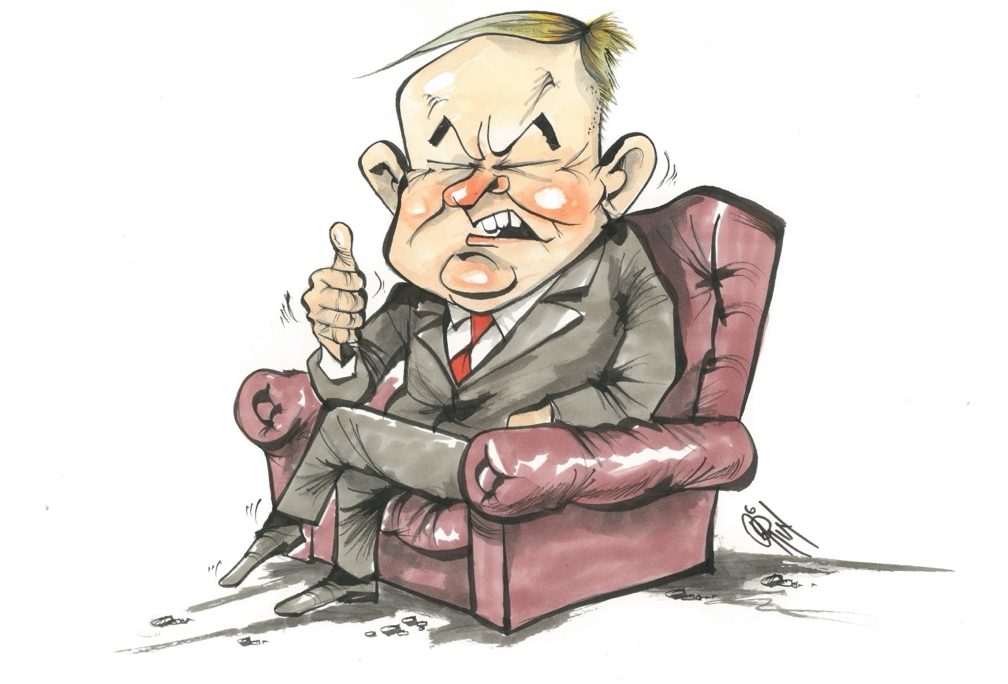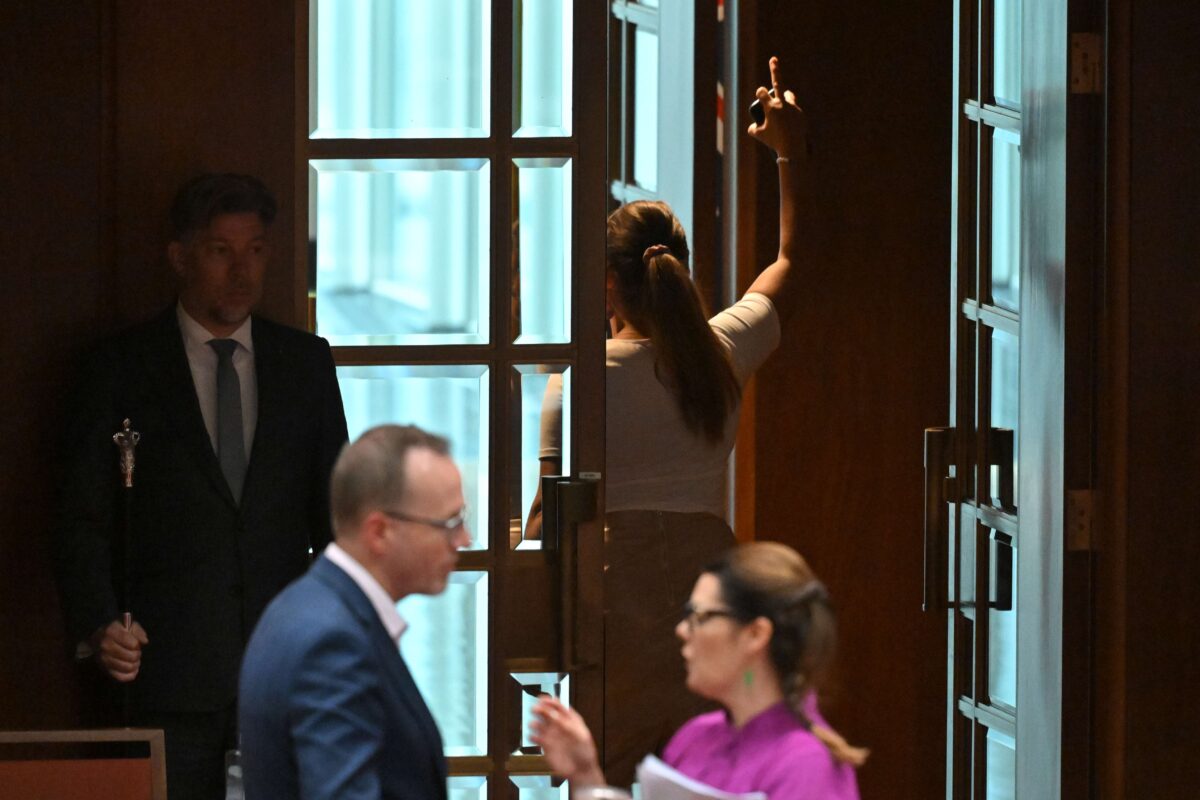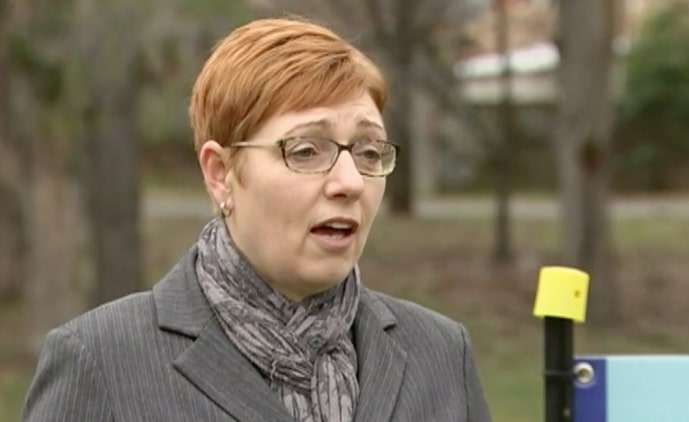
Anthony Albanese runs a highly controlled government using gossamer threads, says political columnist MICHELLE GRATTAN.
ANTHONY Albanese’s first year as prime minister will, as it happens, be bookended by meetings of the Quad – the gathering of the leaders of the US, Japan, India and Australia.
After the 2022 election, Albanese rushed to get himself sworn in so he could immediately fly off to the Quad, for what was a dream initiation into summit diplomacy. The timing could not have been more fortuitous.
The coming Quad on May 24 (three days after the election anniversary) has equally fallen Albanese’s way, because Australia, for the first time, is the host.
This week, Albanese announced the meeting will be held at the Sydney Opera House.
The choice of venue is a master stroke in political terms. What better setting to be welcoming US President Joe Biden, Japanese Prime Minister Fumio Kishida and Indian Prime Minister Narendra Modi – to be showing off Australia to the region? And with greater symbolism, for Australians, than a more workaday backdrop.
As a leader, Albanese presents with a certain homespun quality, which is what makes him popular with ordinary people. Behind that, he demonstrates a shrewdness in exercising power, in communicating and in showcasing both his government and the country.
These skills can be observed ranging from how he manages his ministers (with a light rein but kept in line) to his messaging (he’s personally constantly engaged with the media but seldom tripped up by them). The attention given to the physical framing of the Quad meeting – which comes at a critical time with the uncertain strategic outlook and Australia’s defence policy reorientation – is just another example.
The Albanese government operates on the principle of maximum visibility, but that is accompanied by considerable secrecy. A bevy of ministers is sent out daily to blitz the news and talk cycles. But what we don’t know is as significant as what we get to see and hear.
If we go back to the Hawke government, for example, the cabinet process was much more transparent, the policy arguments among ministers more exposed. Some of this was due to leaks, but there was also a greater willingness to talk about the internal debates.
Mostly – albeit not entirely – Albanese has been able to keep behind closed doors what divisions there are. This holds despite the exposure of some battling around Treasurer Jim Chalmers and budgeting.
News conferences can be telling contests between a prime minister and journalists. Albanese has one interesting tactic for avoiding being thrown on to the back foot.
“You get one question” is his mantra. That stops a journalist following up an answer in which the PM has dodged. While sometimes fellow reporters will home in, often the “one question” approach allows for escape.
Scott Morrison was a control freak and the crassness of his style meant things often ran out of control. Albanese runs a highly controlled government, but uses gossamer threads, so the control becomes near invisible.
After almost a year, a debate is beginning about whether this is emerging as a do-little government or an engine for change.
Journalist Tim Colebatch has written in “Inside Story” that “the Albanese government has fine-tuned many small things but embarked on no really big changes, and none are foreshadowed”.
The government gives the impression of hyperactivity, but does the impression reflect reality?
We have to insert the disclaimer that it’s early days. Beyond that, it’s a case of whether you want to see the glass as half empty or half full.
In around a week we’ve had three reviews released, into the Reserve Bank, defence policy, and the migration system.
The proposed reforms of the bank, embraced by the government, include having a specialist board set interest rates. This and other recommendations are in line with overseas practice. And worth doing. Whether they will make a material difference to Australia’s future performance on monetary policy is unforeseeable.
The defence strategic review, which elevates naval capability and missiles, and places a lot of faith in nuclear-powered submarines, contains an element of smoke and mirrors. One critic says it talks big but delivers small, at least in the short term.
The review rightly identifies a need for urgency in boosting our defence preparedness. But it doesn’t increase expenditure during the forward estimates, finding savings within the defence budget (notably by cutting back army capability) for new initiatives. Pushing the spending increase off into the medium term seems at odds with the review’s warnings.
The migration review has concluded the system is broken more or less all over. Home Affairs Minister Clare O’Neil says she is anxious to repair it as fast as possible and has announced early measures, especially to reduce the reliance on high numbers of “permanently temporary” migrants.
The government is keeping away from dangerous “big Australia” territory: O’Neil says her reforms would actually produce a smaller intake. It’s all about attracting the best people in a competitive international market for migrants. Judgment on the results will have to wait for the government’s second anniversary.
Within a shorter timeframe we’ll know if Albanese’s great social initiative, his referendum for the Voice to Parliament, will become a political triumph of his first term. (It will take a lot longer to find out whether the Voice, if it comes into being, proves to be a policy triumph.)
But the centrality Albanese puts on the Voice has served to highlight the indigenous issue his government has not adequately confronted – the crisis in indigenous communities in the NT.
Beyond his intervention to secure the reimposition of alcohol bans and provide some extra funding, Albanese has shied away from taking on the NT government. Yet more action is desperately needed. A win in the referendum will be diminished if the NT problems are not addressed now.
Climate change is a case study in how the government’s actions can be seen both ways. It has lifted the national effort on emissions reduction and the transition to cleaner energy, while at the same time resisting pressures from the Greens and others on the left to ban new fossil-fuel projects.
Albanese’s presentational skills come to the fore in the way he invokes his government’s climate policy when he sells Australia abroad. This was a feature of his first appearance at the Quad and in his international meetings since.
There are multiple reasons, including the parlous state of the opposition, why Australians have maintained their strong support for the government despite their worsening personal circumstances over recent months.
Important among them has been Albanese’s ability (so far) to retain public trust in an era of mistrust. That will be in his mind as he drives some of the very final decisions for a budget to be delivered in hard times.![]()
Michelle Grattan, Professorial Fellow, University of Canberra.This article is republished from The Conversation.
Who can be trusted?
In a world of spin and confusion, there’s never been a more important time to support independent journalism in Canberra.
If you trust our work online and want to enforce the power of independent voices, I invite you to make a small contribution.
Every dollar of support is invested back into our journalism to help keep citynews.com.au strong and free.
Thank you,
Ian Meikle, editor



Leave a Reply